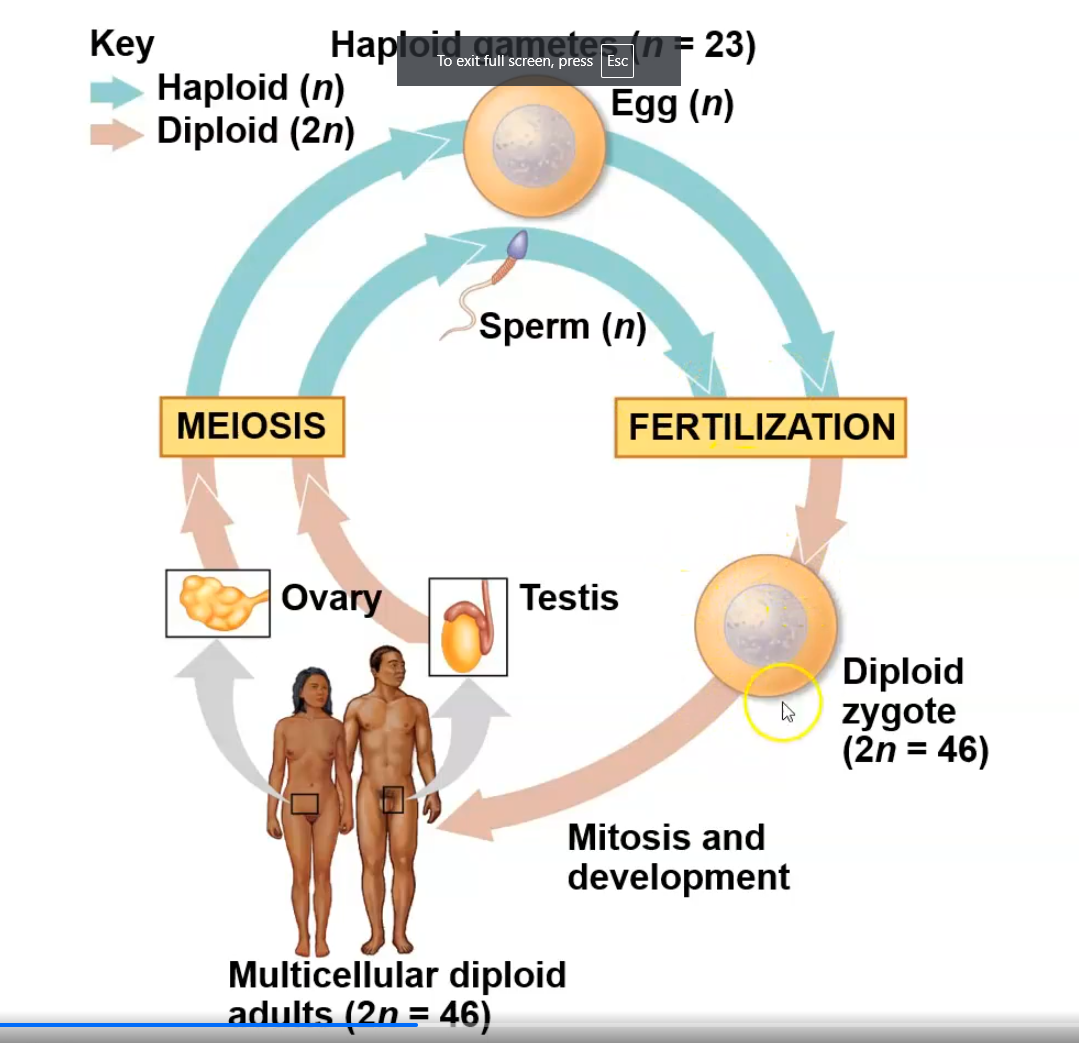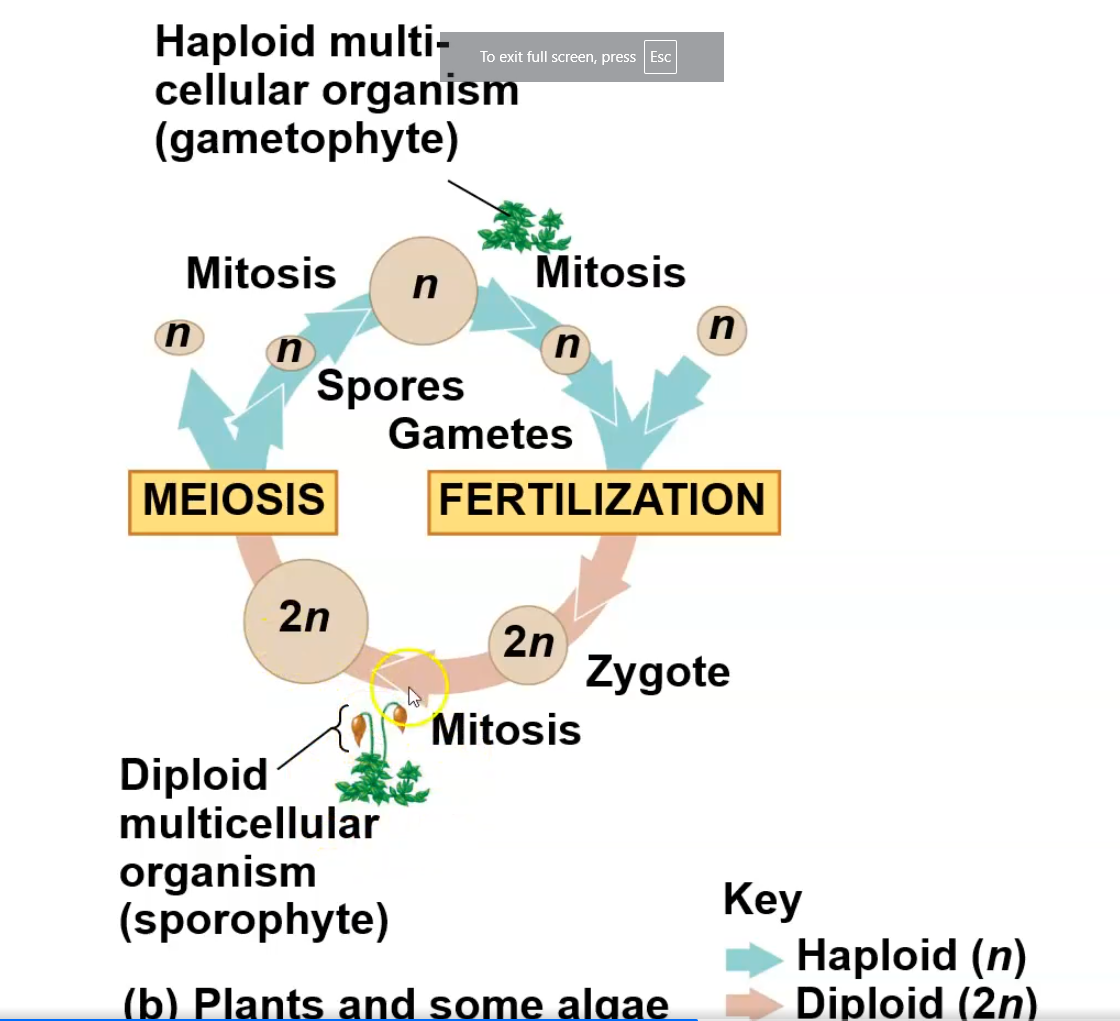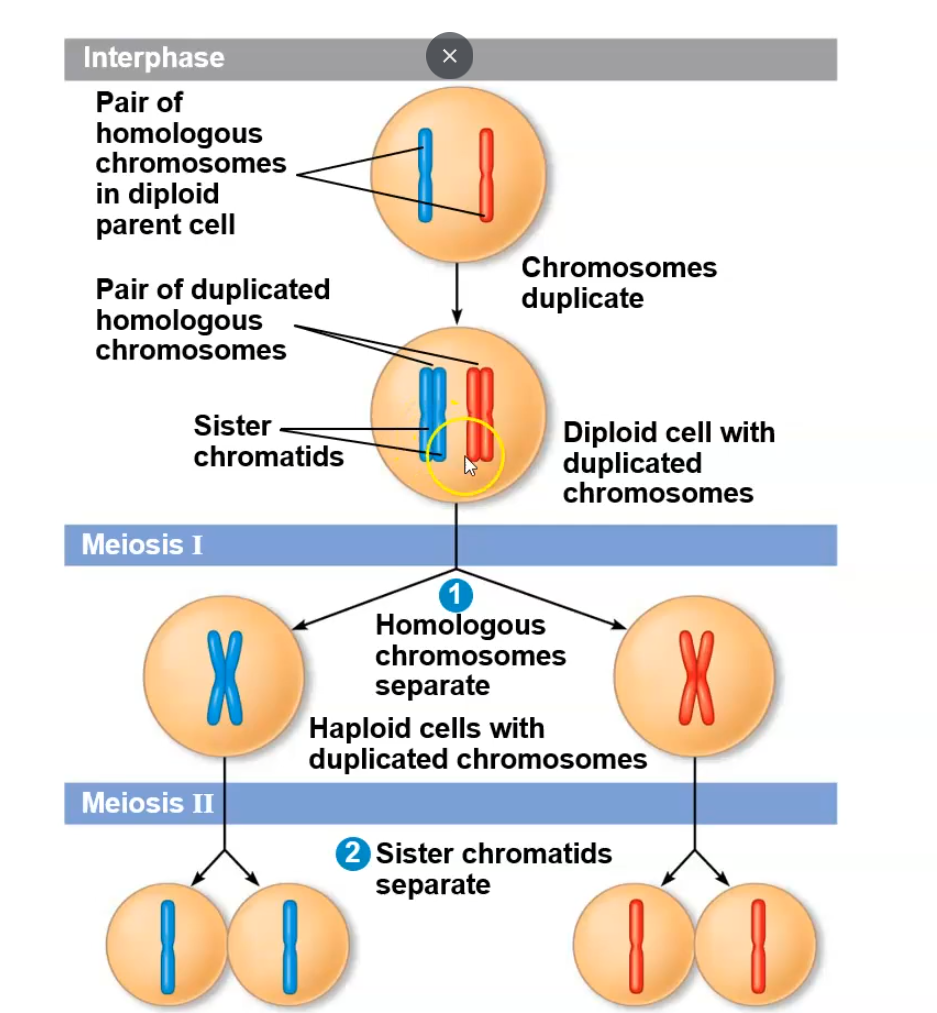Detailed Notes on Meiosis and Genetic Variation
Meiosis Overview
Definition of Meiosis: A specialized form of cell division that reduces the chromosome number by half, resulting in four genetically distinct daughter cells.
Purpose: Essential for sexual reproduction, produces gametes (sperm and eggs).
Key Concepts
Heredity: Transmission of traits from parents to offspring.
Variation: Differences in traits observed among offspring.
Genetics: The scientific study of heredity and variation.
Chromosomes and Genes
Inheritance of Genes: Offspring acquire genes from parents through chromosomes.
Genes: Units of heredity made up of DNA, passed via gametes.
Normal human somatic cells (non-gametes/reproductive) contain 46 chromosomes (2n).
Gametes are haploid, containing one set of chromosomes (n = 23).
Genes are always on the locust
Types of Reproduction
Asexual Reproduction: Single individual produces offspring clones through mitosis.
Sexual Reproduction: Involves two parents contributing genetic material, resulting in offspring with unique gene combinations.
Human Chromosome Structure
Karyotype: Arrangement of chromosomes in pairs by size for analysis.
Homologous Chromosomes: Pairs of chromosomes (one from each parent) that carry the same genes.
Sex Chromosomes: XX for females and XY for males. Remaining chromosomes are autosomes.
Diploid vs. Haploid: Diploid cells (2n) have two sets of chromosomes (46 total). Haploid cells (n) have one set (23).
Mom and dad chromatids are non sister
All somatic cells are diploid
gametes have single set of chromsomes (23) sets , making them essential for sexual reproduction as they combine during fertilization to restore the diploid state.
unfertilized egg alwys x chromosome
sperm cell can be x or y
Zygote cell produces somatic cells by mitosis
only cells that are not produces my mitosis are gaemetes, formed by specialized cells called germ cells
Meiosis Process
Meiosis I and II: Two consecutive division processes.


Meiosis I reduces chromosome number; homologous chromosomes separate.
Meiosis II resembles mitosis; sister chromatids separate.
Meisosis results in 4 daughter cells
Mitosis results in two daugher cells
Stages of Meiosis I:
Chromosomes duplicate during interphase

Prophase I: Chromosomes pair up, crossing over occurs between nonsister chromatids.
sister chromatids are held together by protein called cohesins
zipper like structure called the synaptonemal complex holds the homologs together tightly
prophase 2 , spindle appears, membrane dissapears
Metaphase I: Homologous pairs align at the metaphase plate.
Anaphase I: Homologous chromosomes are pulled to opposite poles.
sister chromatids stay together
anaphase 2 is when sister chromatids seperate and are pulled towards opposite poles, resulting in the formation of individual chromosomes that will eventually become gametes in the final stages of meiosis.
Telophase I: Two haploid cells form, each with duplicated chromosomes.
telophase 2 - cells split again so theres 4
Animal cells have a cleavage furrow, plant cells form a cell plate
Independent Assortment: Chromosome pairs orient randomly during Metaphase I, leading to varied gametes.
Crossing Over: Exchange of genetic material between homologous chromosomes during Prophase I, generating recombinant chromosomes.
Random Fertilization: The variety of sperm and egg combinations increases genetic diversity in offspring.
Important Comparisons
Mitosis vs. Meiosis:
Mitosis results in two genetically identical cells.
Meiosis results in four genetically distinct cells, reduces the chromosome number by half.
Mitosis: Involves one division cycle, occurs in both diploid and haploid cells.
Meiosis: Involves two division cycles, occurs only in diploid cells, includes synapsis and crossing over.
Conclusion
Significance in Evolution: Genetic variation from sexual reproduction contributes to adaptability and evolution, emphasizing the role of meiosis in biodiversity.